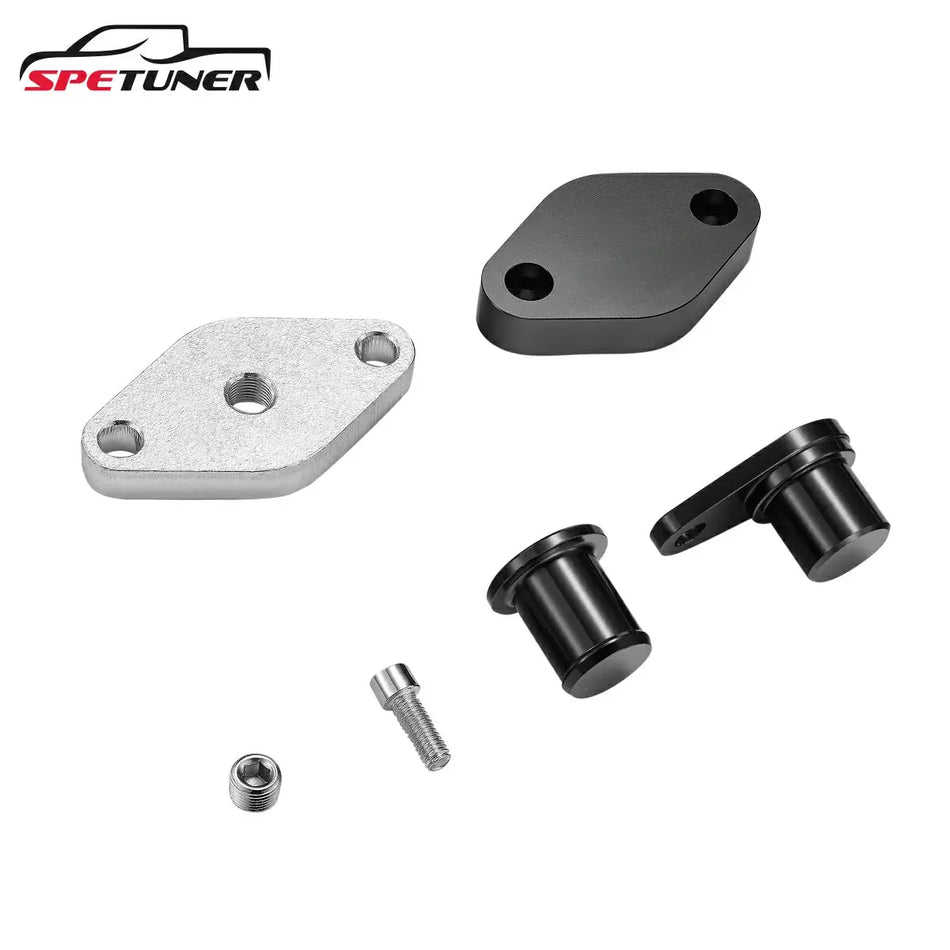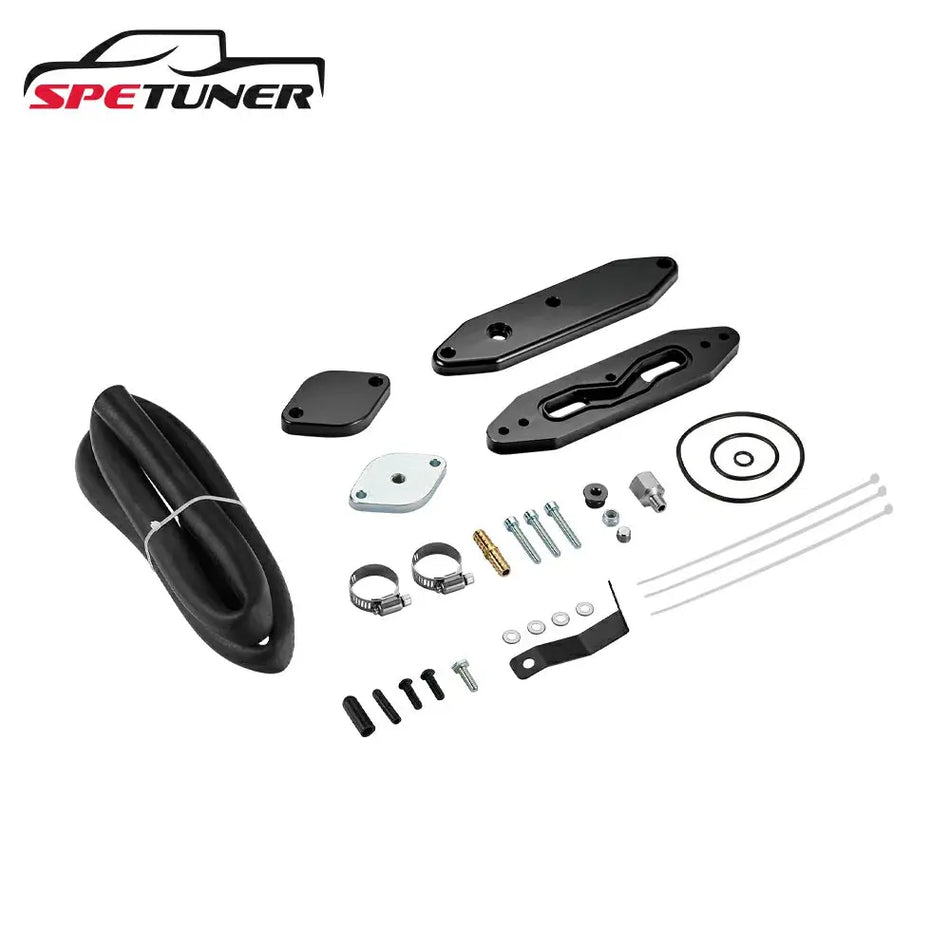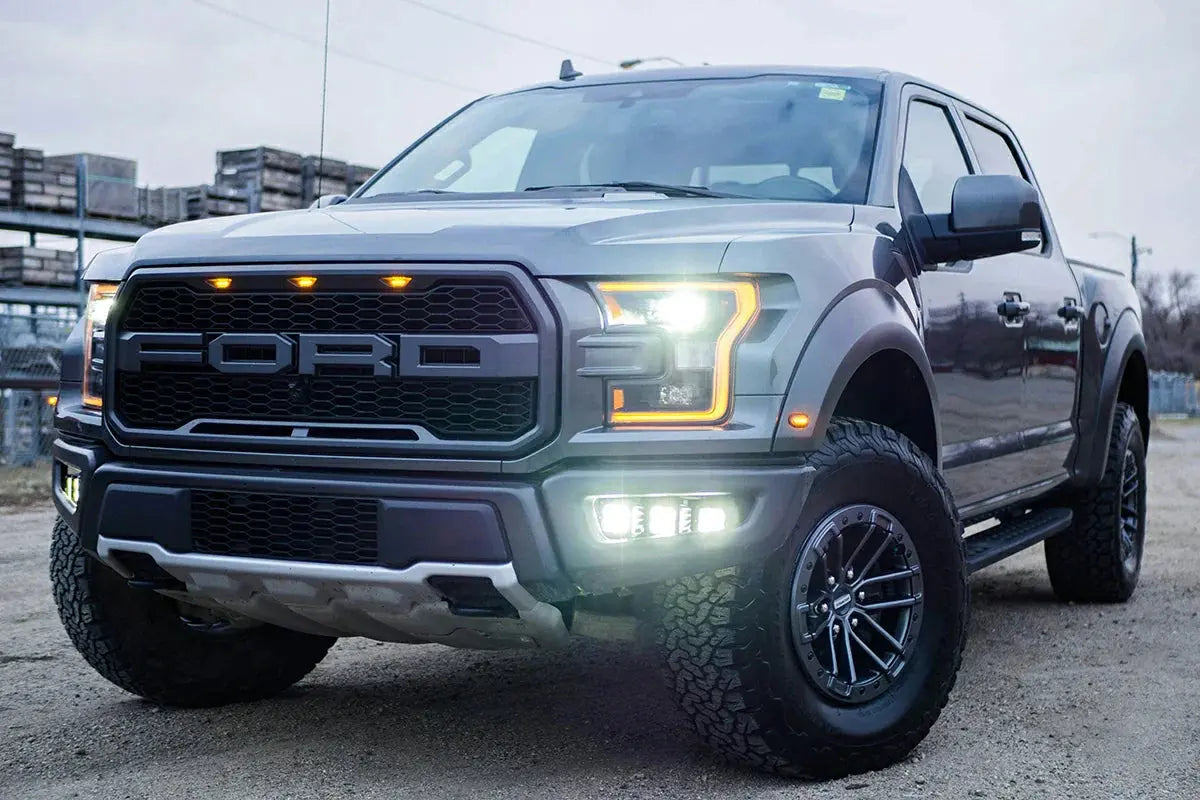Author: Lars — Diesel Technician & SPETUNER Contributor
If you're buying a used 6.7 PowerStroke or checking out work done on your truck, you need to know how to spot an emissions delete. This guide will show you exactly what to look for, from obvious visual clues to hidden electronic signs.
What Does "Deleted" Mean?
When someone says a 6.7 PowerStroke is "deleted," they mean the emissions equipment has been removed or turned off. This usually includes:
- DPF (Diesel Particulate Filter) - the soot filter
- EGR (Exhaust Gas Recirculation) - reduces NOx emissions
- DEF/SCR system - the blue fluid system
- Sometimes the CCV (crankcase vent) filter
These mods are meant for off-road and race trucks only. Let's look at how to spot them.
Read more: What Does Diesel Truck Deletion Mean?
The 30-Second Quick Check Method
Start with these three checks that take less than a minute total:
1. The Fingertip Test
Stick your finger inside the exhaust tip and rub it around. On a stock 6.7 PowerStroke, your finger stays clean even at 200,000 miles. On a deleted truck, you'll get black soot every time. This works because the DPF burns off soot particles at 1,100°F during regeneration cycles. No DPF means that soot goes straight out the tailpipe.
2. The Key-On Listen
Turn the key to the on position without starting the engine. Wait 3-5 seconds. You should hear a distinct whirring or buzzing sound - that's the DEF pump priming. No sound? The DEF system is likely disconnected or deleted. This pump runs every key cycle to keep DEF from crystallizing in the lines.
3. The Basketball Test
Look under the truck between the cab and the rear axle. The factory DPF/SCR unit is about as big as a basketball and 3 feet long. If you see a skinny 4-inch pipe instead, it's deleted. The size difference is impossible to miss once you know what you're looking for.
Check Under the Hood
Check the EGR Delete

The EGR system sits on the top-left of your engine, near the firewall. On a stock truck, you'll see the EGR valve and cooler with coolant hoses running to it.
Here's what to look for if it's been deleted:
- Block-off plates where the EGR valve used to be
- Missing EGR cooler - just empty space or a bypass pipe
- Different coolant hoses that don't match the factory routing
- Aftermarket clamps or hoses in weird colors (red, blue, etc.)
The EGR cooler is about the size of a loaf of bread. If it's gone, you'll know it.
Check the Intake System

Deleted trucks often have upgraded intakes. Look for:
- Cold air intakes that go straight to the turbo
- Missing factory air boxes or resonators
- Shiny aluminum or colored pipes instead of black plastic
- Brand names like SPETUNER, S&B, or aFe on the intake
If you see fancy aluminum intercooler pipes with welds and logos, that's a sure sign of mods.
CCV Filter Mods
The crankcase filter sits on top of the engine. Some people delete this, too. Look for:

- Catch cans mounted in the engine bay
- Vent filters where they shouldn't be
- Hoses venting to the atmosphere instead of back to the intake
Check the Exhaust System
This is where you'll find the most obvious signs.
Look Under the Truck
Get under there and look at the exhaust from the turbo back. A stock 6.7 has a HUGE exhaust canister (about 3 feet long and as big around as a basketball). This holds the DPF and SCR catalyst.
If the truck is deleted, you'll see:
- A straight pipe or much smaller "race pipe" (4-5 inches wide)
- Weld marks where the factory stuff was cut out
- Missing sensors - stock has 4-6 sensors, deleted has none or they're plugged
- Different exhaust hangers because the delete pipe is lighter
The difference is obvious - it's like replacing a barrel with a baseball bat.
Check the Exhaust Tip
This is the quickest check. Look inside the exhaust tip:

- Stock trucks = Clean, no soot at all
- Deleted trucks = Black soot buildup
Run your finger inside. If it comes out black, the DPF is gone. Stock trucks leave no black on your finger, even after 100,000 miles.
DEF System Check
Find the DEF Tank
The DEF tank is under the truck bed or behind the cab. Look for the blue cap.
Signs it's been disabled:
- No blue cap or it's sealed shut
- Cut hoses that are capped off or zip-tied
- No pump noise when you turn the key (should hear a whirring sound for 3-5 seconds)
- Disconnected wires wrapped in tape
Even if the tank looks normal, check if the DEF level ever changes. If it stays full all the time, it's been turned off in the computer.
DEF Injector
There's a DEF injector on the exhaust pipe. If deleted:
- The injector is missing and the hole is welded shut
- It's still there but has no wires or hoses connected
- The exhaust pipe has no spot for an injector at all
Computer and Electronic Clues
Using a Code Reader
Plug in an OBD-II scanner (a good one that reads Ford codes). Here's what to check:
Emissions Monitors:
- Stock truck = Shows "Ready" or "Complete"
- Deleted truck = Shows "Not Supported" or "N/A"
DPF Data:
- Stock truck = Shows soot load %, last regen date, pressure readings
- Deleted truck = All zeros or "Not Available"
DEF Usage:
- Stock truck = DEF level drops over time
- Deleted truck = DEF level never changes
Hidden Tuning Signs
Even without a tuner plugged in, check for:
- Wrong calibration codes in the computer
- All monitors showing "Ready" immediately after clearing codes (impossible on stock trucks)
- Modified transmission settings (shifts harder, different patterns)
How It Drives Different
Test Drive Clues
Take it for a drive and notice:
Sound Changes:
- Deleted = Loud turbo whistle, deeper exhaust sound
- Stock = Quiet, almost no turbo noise
Power Delivery:
- Deleted = Stronger pull, especially 1,500-2,500 RPM
- Stock = Smoother, more controlled power
Smell:
- Deleted = Strong diesel smell at idle
- Stock = Almost no smell
Smoke:
- Deleted = Might puff black smoke when you floor it
- Stock = Never any visible smoke
Different Years, Different Signs
2011-2014 (First Gen 6.7)
These are easiest to spot:
- Huge DPF is super obvious when missing
- Big EGR cooler is easy to see removed
- Often have H&S or Spartan tuners
- Usually smoke more when deleted
2015-2016 (Updated First Gen)
Similar to early years but:
- Slightly smaller emissions parts
- More likely to have SCT or EZ Lynk tuners
- DEF system more integrated
2017-2019 (Second Gen)
Harder to spot:
- Single turbo changed the engine layout
- Emissions stuff is more compact
- Often need a scanner to confirm
- Check exhaust tip and DEF usage
2020-2022 (Updated Second Gen)
Often "ghost deleted":
- Parts still there but turned off in computer
- Need scanner to verify
- Look for PCM tampering signs
- Check if DEF ever drops
2023-2024 (Third Gen)
Very rare to find deleted:
- Computer is encrypted from factory
- Usually only software mods if any
- Parts almost always still there
- Check exhaust tip for soot (main giveaway)
Quick Checklist
Visual Signs:
- Straight pipe under truck
- Block-off plates on engine
- Black soot in exhaust tip
- Missing or disabled DEF tank
- Tuner device in cab
Computer Signs:
- Emissions monitors show "N/A"
- No regen history
- DEF never drops
- Soot load always at 0%
Driving Signs:
- Loud turbo whistle
- Diesel smell
- Stronger acceleration
Frequently Asked Questions
Q: Can a deleted 6.7 PowerStroke pass inspection?
A: No. Deleted trucks will fail any emissions inspection. Some states only require safety inspections, but federal law prohibits tampering with emissions equipment on road-driven vehicles.
Q: How much does it cost to return a deleted 6.7 to stock?
A: Expect $4,000-8,000 to fully restore emissions equipment. This includes new DPF ($2,000), EGR cooler ($800), DEF system components ($500), labor ($1,500+), and ECM programming ($500-2,000).
Q: Will a dealer work on a deleted truck?
A: Most Ford dealers will refuse powertrain work on deleted trucks. They'll do basic maintenance like oil changes but won't touch engine or transmission repairs due to liability concerns.
Q: Can you delete just the DPF and leave EGR?
A: Technically possible but not recommended. The systems work together - deleting one without the other causes reliability issues and still requires illegal ECM modification.
Bottom Line
Spotting a deleted 6.7 PowerStroke isn't hard once you know what to look for. The exhaust tip test takes 5 seconds and tells you a lot. A quick look under the truck for that big DPF canister takes another minute. Add in checking for a working DEF system, and you'll know for sure.
Whether you're buying a truck or checking out work that's been done, use this guide to know exactly what you're dealing with. The better the delete work, usually the better the truck was maintained overall. Take your time, check everything, and you'll avoid any surprises.









